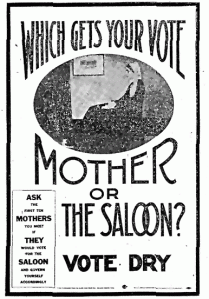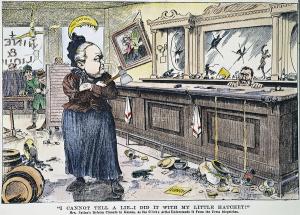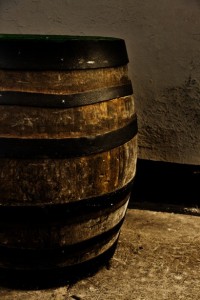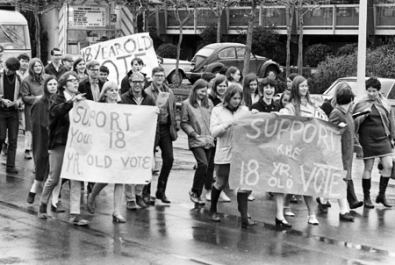The following is a guest blog from a contributor to the Coat of Arms Database. For more information, please read below.
A surprising number of us have at least one noble ancestor.
Actually, this shouldn’t be surprising. There was only so much land to go around, so over the centuries, some family lines quietly slipped down the social scale. More significantly, male aristocrats were the rock stars of their day. Up until Victorian times, great houses considered children born “on the wrong side of the sheet” to be an asset rather than a liability – it’s handy to have family members who aren’t in the line of succession and yet owe everything to the family.
When we think of noble ancestors, we think of “family crests”, by which we usually mean what are, technically speaking, “the coats-of-arms belonging to our ancestors”. We use the term “heraldry” both as a catch-all-for coats-of-arms – as in, “tell me about that lord’s heraldry” – and to refer to the “Science of Heraldry”, that is the ancient body of rules governing and describing such coats-of-arms.
Nobody really knows where coats-of-arms came from. They first appeared in recognisable form between the First Crusade (1095-99) and Second Crusade (1147-49). Naturally, there’s a theory that they developed in the Holy Land when knights learned to use surcoats to cover their mail armour against the sun, and then started adopting distinctive patterns – a bit like the way Scottish tartan came to indicate specific clans.
Certainly, it’s true that some of heraldry’s technical terms are Arabic in origin. For example, Azure (“blue”) comes from the word azraq, and Checky (“checked”) from shatranj. And the first recognised coat-of-arms in France belonged to the Count of Toulouse and incorporated a Cross of Constantine in reference to… well, really very complicated Crusader history. (Go read Harold Lamb’s Iron Men and Saints for a gripping retelling.)
However, this can’t be the whole story. Much of Spain belonged to the Islamic Moors who were as likely to be allied with their Christian neighbours as to be engaged in battling them. Also, you don’t need to be on crusade to feel the heat! Most European military campaigns would take place in summer, and armour can be unbearably hot almost anywhere. (I’ve seen a helmet raise steam from damp grass on a summer’s day in an English field.)
So the cultural influence, and that baking hot sun, may well have been much closer to home.
Why coats-of-arms appeared when they did, is not entirely obvious.
It’s commonly said coats-of-arms were a response to the adoption of full-faced helmets: you needed to know who was behind the metal mask. However, full-faced helmets didn’t actually become standard until well into the 13th century, after coats-of-arms were in common use. Conversely, helmets have always made faces harder to recognise, especially in combat when the adrenalin is pumping. No surprise then that coloured flags and distinctive shield patterns probably long-predate heraldry. So, though coats-of-arms must have been vital recognition aids in medieval battles, they must have been more than just a practical response to an age old problem.
It’s also sometimes said that the crusaders learned to use heraldry from their Islamic foes. However, though the influence is obviously there (see above), there was nothing sudden about the contact with the Islamic world. The Moors were in Spain from the 8th century and the Arabs in Sicily from the 7th!
Probably the best explanation for the development and formalisation of heraldry is that it resulted from a combination of conditions in the 12th century.
Trade and hence the economy was picking up and aristocratic material culture became more complex and much richer, which is the academic way of saying, “Rich people had more spending power, and there was more stuff for them to buy”. There was more opportunity, and more need, to show off wealth and status through wearing fine fabrics, and fine fabrics lent themselves to distinctive designs. This economic advancement, plus friendly contact with Islamic Spain, powered something which modern scholars call the 12th Century Renaissance, meaning there were literate thinkers around to create and write down systems governing Heraldry as it emerged.
Meanwhile, knights and nobility had merged into an exclusive (mostly) hereditary class. At the time of the First Crusade, knights were really just professional heavy cavalry with a rough and ready warrior ethos, and noble status might be hereditary, but land and title were often not. Half a century later, by the time of the Second Crusade, thanks to the civilising efforts of both court ladies and the church, knighthood had become glamorous vocation, available only to aristocrats, and most male nobles were also knights. Noble titles had also become firmly hereditary. Coats-of-arms seem to have evolved as a badge of aristocratic status, especially important in battles because they indicated that it was worth sparing the bearer’s life in the hope of extracting a ransom. In addition, they served like modern commercial branding, both for the powerful noble wanting to be visibly powerful, and for the young knight trying to make his mark
When such a knight was trying to make his mark, it was more often than not in the field of tourney rather than war. 12th century tournaments were chaotic armoured brawls with teams that could number in hundreds. Like in battles, a defeated knight would be held for ransom. Unlike in battles, there was a civilian audience, so visual recognition of individual knights as opposed to teams was critical to careers and reputation.
Sometimes this had its downside. Sir William the Marshal, veteran tournament ace, was a magnet for ambitious young blades, even when his teammate was the heir to the throne of England and worth a much more significant ransom. On one occasion, the Marshal was voted the day’s best knight. However, it took a while to find him and give him his prize because he was in a blacksmith’s workshop, head on an anvil, having his battered and caved-in helmet torn off his head in strips
So coats-of-arms may look bright and pretty. However, when one catches your eye, remember that they have their origins in the sweat and dust of battle and tournament, and that some of them started out much like the colourful paint schemes adopted by World War One fighter aces…
Jack Turton is an English contributor to the Coat of Arms Database His ancestors plied their longbows in the service of Henry the Fifth.
[Editor’s Note] The work they do at COAD is quite incredible. Check out an example of their work here: https://coadb.com/surnames/hess-arms.html]

 An infographic from the team at the
An infographic from the team at the 






